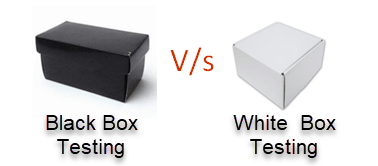Testing Methods – The Box approach

Software testing methods are traditionally divided into white- and black-box testing. These two approaches are used to describe the point of view that a test engineer takes when designing test cases.
White-box testing
White-box testing (or clear box testing, glass box testing, transparent box testing, or structural testing) is a method of testing software that tests internal structures or workings of an application, as opposed to its functionality (i.e. black-box testing). In white-box testing an internal perspective of the system, as well as programming skills, are required and used to design test cases. The tester chooses inputs to exercise paths through the code and determine the appropriate outputs. This is analogous to testing nodes in a circuit, e.g. in-circuit testing (ICT).
While white-box testing can be applied at the unit, integration and system levels of the software testing process, it is usually done at the unit level. It can test paths within a unit, paths between units during integration, and between subsystems during a system level test. Though this method of test design can uncover many errors or problems, it might not detect unimplemented parts of the specification or missing requirements.
White-box test design techniques include:
- Control flow testing
- Data flow testing
- Branch testing
- Path testing
White box testing is when the tester has access to the internal data structures and algorithms including the code that implement these.
Black-Box Testing
Black-box testing is a method of software testing that tests the functionality of an application as opposed to its internal structures or workings. Specific knowledge of the application’s code/internal structure and programming knowledge in general is not required. Test cases are built around specifications and requirements, i.e., what the application is supposed to do. It uses external descriptions of the software, including specifications, requirements, and design to derive test cases. These tests can be functional or non-functional, though usually functional. The test designer selects valid and invalid inputs and determines the correct output. There is no knowledge of the test object’s internal structure.
This method of test can be applied to all levels of software testing: unit, integration, functional, system and acceptance. It typically comprises most if not all testing at higher levels, but can also dominate unit testing as well.
Black box testing treats the software as a “black box”—without any knowledge of internal implementation. Black box testing methods include: equivalence partitioning, boundary value analysis, all-pairs testing, fuzz testing, model-based testing, traceability matrix, exploratory testing and specification-based testing.

